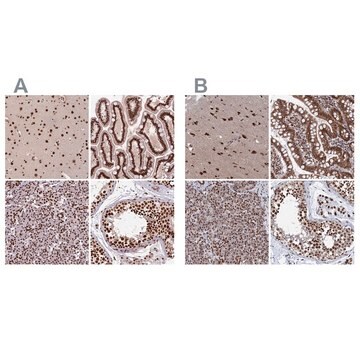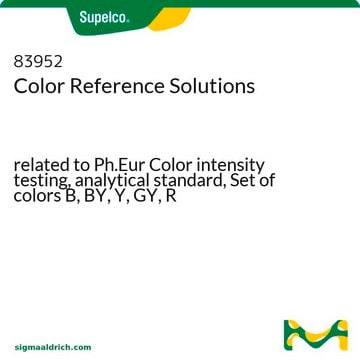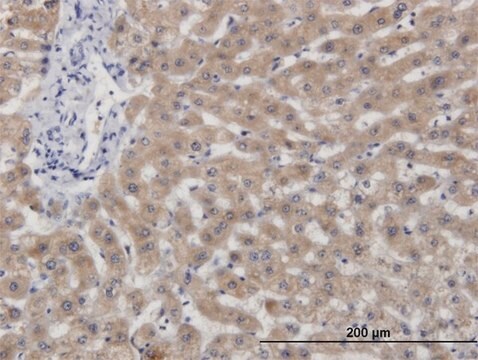SAB1402978
Monoclonal Anti-MLL2 antibody produced in mouse
clone 2E1, purified immunoglobulin, buffered aqueous solution
Sinônimo(s):
AAD10, ALR, CAGL114, MLL4, TNRC21, Anti-AAD10, Anti-ALL1-related protein, Anti-ALR, Anti-CAGL114, Anti-Histone-lysine N-methyltransferase, Anti-KMS, Anti-KMT2B, Anti-KMT2D, Anti-Kabuki make-up syndrome, Anti-Kabuki mental retardation syndrome, Anti-MLL4, Anti-Myeloid/lymphoid or mixed-lineage leukemia 2, Anti-TNRC21
About This Item
Produtos recomendados
fonte biológica
mouse
conjugado
unconjugated
forma do anticorpo
purified immunoglobulin
tipo de produto de anticorpo
primary antibodies
clone
2E1, monoclonal
forma
buffered aqueous solution
peso molecular
antigen ~37.11 kDa
reatividade de espécies
human
técnica(s)
indirect ELISA: suitable
western blot: 1-5 μg/mL
Isotipo
IgG2aκ
nº de adesão NCBI
Condições de expedição
dry ice
temperatura de armazenamento
−20°C
modificação pós-traducional do alvo
unmodified
Informações sobre genes
human ... MLL2(8085)
Procurando produtos similares? Visita Guia de comparação de produtos
Descrição geral
Imunogênio
Sequence
SKLEGMFPAYLQEAFFGKELLDLSRKALFAVGVGRPSFGLGTPKAKGDGGSERKELPTSQKGDDGPDIADEESRGLEGKADTPGPEDGGVKASPVPSDPE
Ações bioquímicas/fisiológicas
forma física
Exoneração de responsabilidade
Not finding the right product?
Try our Ferramenta de seleção de produtos.
Código de classe de armazenamento
10 - Combustible liquids
Classe de risco de água (WGK)
WGK 1
Ponto de fulgor (°F)
Not applicable
Ponto de fulgor (°C)
Not applicable
Certificados de análise (COA)
Busque Certificados de análise (COA) digitando o Número do Lote do produto. Os números de lote e remessa podem ser encontrados no rótulo de um produto após a palavra “Lot” ou “Batch”.
Já possui este produto?
Encontre a documentação dos produtos que você adquiriu recentemente na biblioteca de documentos.
Nossa equipe de cientistas tem experiência em todas as áreas de pesquisa, incluindo Life Sciences, ciência de materiais, síntese química, cromatografia, química analítica e muitas outras.
Entre em contato com a assistência técnica








